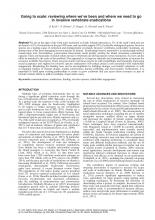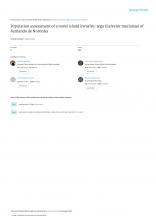Going to scale: reviewing where weve been and where we need to go in invasive vertebrate eradications
Hagen, E.
,
Holmes, N.
,
Howald, G.
,
Keitt, B.
,
Poiani, K.
2019
We are on the edge of the sixth mass extinction on Earth. Islands represent ca. 5% of the earths land area yet are home to 61% of extinctions in the past 500 years, and currently support 39% of critically endangered species. Invasive species are a leading cause of extinction and endangerment on islands. Invasive vertebrates, particularly mammals, are among some of the most damaging invasive species on islands. Eradicating invasive mammals is an increasingly utilised conservation tool. Nevertheless, conservation intervention needs greatly outstrip the island restoration communitys capacity. There are thousands of islands where invasive vertebrates are driving species toward extinction. So, how can the effort be matched to the scale of the problem? One approach is to improve outreach and communications to increase the resources available for projects. There are great stories; but these need to be told compellingly and repeatedly. Increasing social acceptance and support for invasive species eradications will reduce project costs associated with stakeholder engagement. Broadening the funding base can be accomplished by building stronger cost benefit valuations as well as engaging funders of climate change, marine conservation, human wellbeing, and food security. Furthermore, it is important to build upon existing partnerships to create or grow coalitions that can access these resources as part of broader, holistic efforts to address multiple conservation issues.


